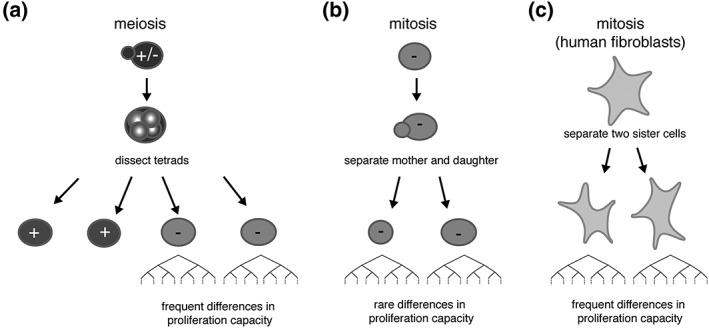Figure 1.

(a) Differences in proliferation observed in pairs of sister telomerase‐negative cells after budding yeast meiosis, (b) budding yeast mitosis, and (c) human fibroblast mitosis. In theory, the lengths of telomeres in a pair of mother and daughter cells after mitosis are similar (but not equal, see Figure 3). (a and b) In contrast, telomere lengths are more frequently different among meiotic products because of independent segregation of chromosomes in meiosis. Proliferation potential in the progenies of telomerase‐negative pairs of cells from a meiotic product is thus more variable than for telomerase‐negative pairs of mitotically divided mother and daughter cells (Enomoto, Glowczewski, & Berman, 2002; Xu, Duc, Holcman, & Teixeira, 2013). (c) In contrast, in human fibroblasts, the onset of senescence is variable among pairs of daughter cells derived from mitosis (Jones, Whitney, & Smith, 1985). This suggests that replicative senescence of human cells is accompanied by events that might amplify heterogeneity. – and + indicate telomerase negative and telomerase positive, respectively.
